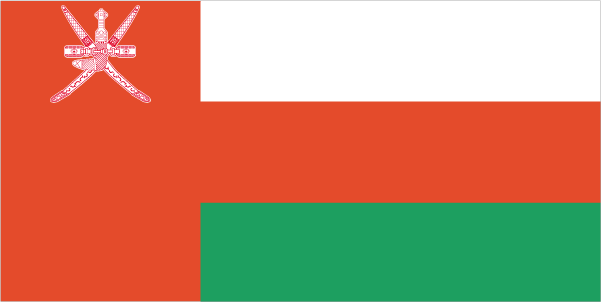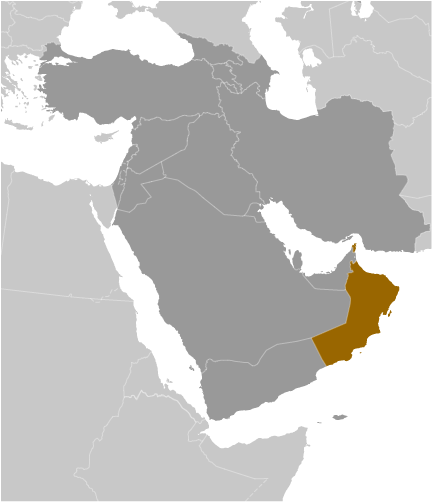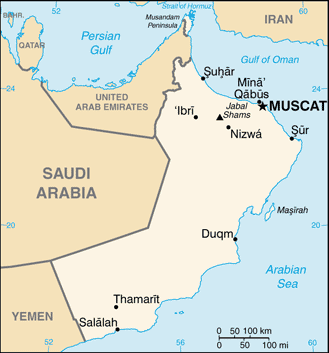
|
|
Advertisements:
People And SocietyNationality
Noun Omani(s)
Adjective Omani Ethnic groups
Arab, Baluchi, South Asian (Indian, Pakistani, Sri Lankan, Bangladeshi), African Languages
Arabic (official), English, Baluchi, Urdu, Indian dialects Religions
Ibadhi Muslim (official) 75%, other (includes Sunni Muslim, Shia Muslim, Hindu) 25% Population World Ranking: 136
3,090,150 (July 2012 est.)
Note Includes 577,293 non-nationals Age structure
0-14 years
31.2% (male 484,292/female 460,066) 15-64 years 65.7% (male 1,133,329/female 856,701) 65 years and over 3.1% (male 47,786/female 45,785) (2011 est.) Median age
Total 24.4 years
Male 25.7 years Female 22.8 years (2012 est.) Population growth rate World Ranking: 47
2.043% (2012 est.)
Birth rate World Ranking: 62
24.33 births/1,000 population (2012 est.) Death rate World Ranking: 210
3.42 deaths/1,000 population (July 2012 est.) Net migration rate World Ranking: 139
-0.47 migrant(s)/1,000 population (2012 est.) Urbanization
Urban population 73% of total population (2010)
Rate of urbanization 2.3% annual rate of change (2010-15 est.) Major cities - population
MUSCAT (capital) 634,000 (2009) Sex ratio
At birth 1.05 male(s)/female
Under 15 years 1.05 male(s)/female 15-64 years 1.31 male(s)/female 65 years and over 1.03 male(s)/female Total population 1.22 male(s)/female (2011 est.) Maternal mortality rate World Ranking: 121
32 deaths/100,000 live births (2010) Infant mortality rate World Ranking: 116
Total 14.95 deaths/1,000 live births
Male 15.25 deaths/1,000 live births Female 14.63 deaths/1,000 live births (2012 est.) Life expectancy at birth World Ranking: 103
Total population 74.47 years
Male 72.61 years Female 76.43 years (2012 est.) Total fertility rate World Ranking: 68
2.87 children born/woman (2012 est.) Health expenditures World Ranking: 178
3% of GDP (2009)
Physicians density
1.901 physicians/1,000 population (2008) Hospital bed density
1.9 beds/1,000 population (2008) Hiv/aids - adult prevalence rate World Ranking: 145
0.1% (2009 est.)
Hiv/aids - people living with hiv/aids World Ranking: 138
1,100 (2009 est.)
Hiv/aids - deaths World Ranking: 127
Fewer than 100 (2009 est.)
Education expenditures World Ranking: 106
3.9% of GDP (2006)
Literacy
Definition
Age 15 and over can read and write Total population 81.4%Male 86.8% Female 73.5% (2003 census) School life expectancy (primary to tertiary education)
Total 12 years
Male 12 years Female 11 years (2009)
Comments
Add a new comment: |
Advertisement
Members area
Oman (Muscat):
 
GPS points from Oman (Muscat)
|
||||||||

 The inhabitants of the area of Oman have long prospered on Indian Ocean trade. In the late 18th century, a newly established sultanate in Muscat signed the first in a series of friendship treaties with Britain. Over time, Oman's dependence on British political and military advisors increased, but it never became a British colony. In 1970, QABOOS bin Said Al-Said overthrew the restrictive rule of his father; he has ruled as sultan ever since. His extensive modernization program has opened the country to the outside world while preserving the longstanding close ties with the UK. Oman's moderate, independent foreign policy has sought to maintain good relations with all Middle Eastern countries. Inspired by the popular uprisings that swept the Middle East and North Africa in 2010-11, Omanis began staging marches and demonstrations to demand economic benefits, an end to corruption, and greater political rights. In February and March 2011, in response to protester demands, QABOOS pledged to create more government jobs and promised to implement economic and political reforms, such as granting legislative and regulatory powers to the Council of Oman and the introduction of unemployment benefits. Also in March, the Gulf Cooperation Council pledged $20 billion in financial aid to Oman and Bahrain over a 10-year period to assist the two nations in their struggle with Arab protests. Amid concessions made to oppositionists, the government during the summer continued to crack down on protests and demonstrations, and increasingly clamped down on the media. In October 2011, QABOOS issued a royal decree expanding the legislative powers of the Council of Oman to draft, amend, and approve legislation.
The inhabitants of the area of Oman have long prospered on Indian Ocean trade. In the late 18th century, a newly established sultanate in Muscat signed the first in a series of friendship treaties with Britain. Over time, Oman's dependence on British political and military advisors increased, but it never became a British colony. In 1970, QABOOS bin Said Al-Said overthrew the restrictive rule of his father; he has ruled as sultan ever since. His extensive modernization program has opened the country to the outside world while preserving the longstanding close ties with the UK. Oman's moderate, independent foreign policy has sought to maintain good relations with all Middle Eastern countries. Inspired by the popular uprisings that swept the Middle East and North Africa in 2010-11, Omanis began staging marches and demonstrations to demand economic benefits, an end to corruption, and greater political rights. In February and March 2011, in response to protester demands, QABOOS pledged to create more government jobs and promised to implement economic and political reforms, such as granting legislative and regulatory powers to the Council of Oman and the introduction of unemployment benefits. Also in March, the Gulf Cooperation Council pledged $20 billion in financial aid to Oman and Bahrain over a 10-year period to assist the two nations in their struggle with Arab protests. Amid concessions made to oppositionists, the government during the summer continued to crack down on protests and demonstrations, and increasingly clamped down on the media. In October 2011, QABOOS issued a royal decree expanding the legislative powers of the Council of Oman to draft, amend, and approve legislation. 